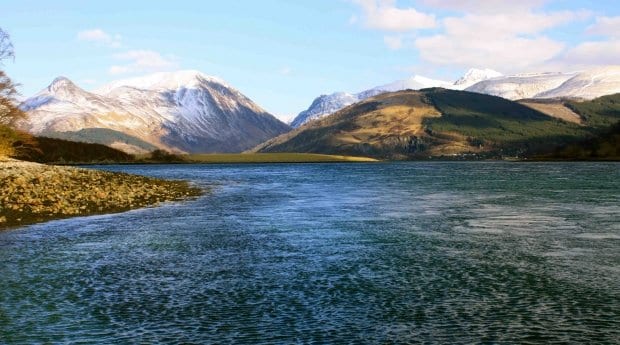
Loch Leven. Credit: Aefa Mulholland
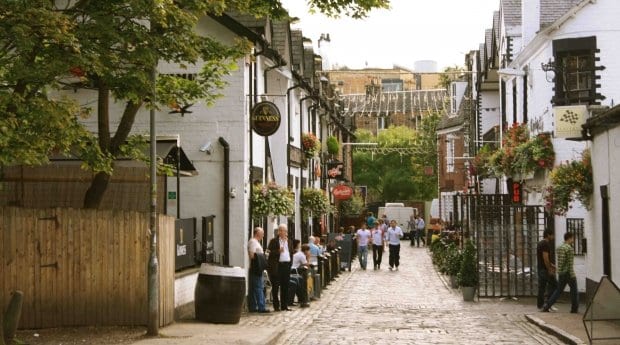
Ashton Lane in Glasgow. Credit: Aefa Mulholland
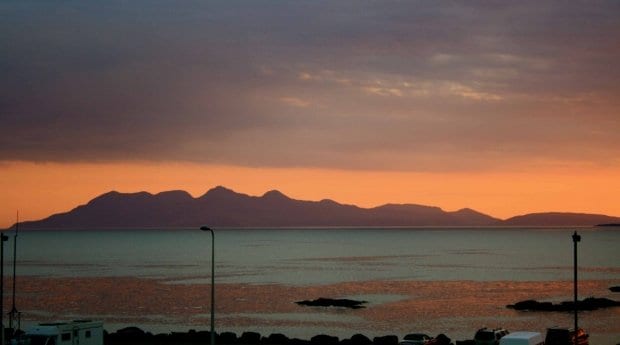
Sunset over the Hebrides Islands. Credit: Aefa Mulholland
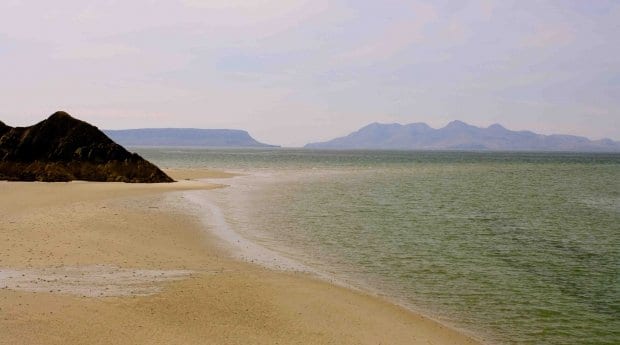
Silver Sands of Morar. Credit: Aefa Mulholland

Loch Lomond. Credit: Aefa Mulholland
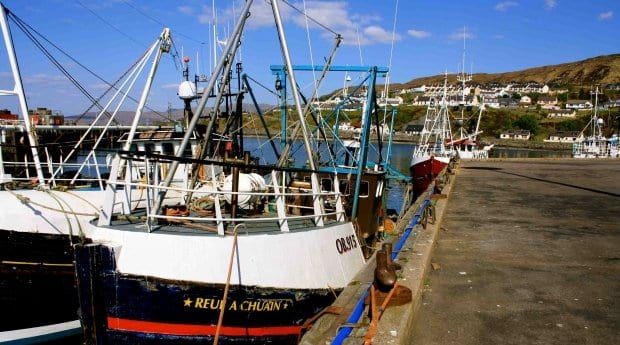
Fishing village of Mallaig. Credit: Aefa Mulholland

Typical street in Edinburgh. Credit: Aefa Mulholland

View from Edinburgh Castle. Credit: Aefa Mulholland

West highlands. Credit: Aefa Mulholland
The UK’s most northerly nation juts out into the Atlantic and the North Sea, stopping just 18 kilometres short of the Northern Ireland coast and, if you count the Orkney and Shetland archipelagos, a mere 362 kilometres off Norway. With a population of just over five million and points where the country measures as little as 40 kilometres across from east to west, it’s a small, proud land with highlights that can be seen within a week.
Strewn with awe-inspiring lochs, heather-clad glens, achingly desolate moors and more than 70 percent covered by mountains, Scotland is best known for the rugged beauty of the West Highlands and Western Isles and for Edinburgh’s incredible medieval and gothic splendour. Off this well-touristed trail, though, other worthwhile destinations await, including the imposing Cairngorms mountains; east-coast cities St Andrews, Aberdeen and Inverness; and — on the west coast — rambunctious Glasgow, Scotland’s largest city.
Unless you saunter into a swarm of midges (Scotland’s malevolent miniature mosquitoes) or unruly, sauced-up Scots, there really are no especially frightening critters to prevent you from exploring all corners of this diminutive land. While few fierce beasts claim Scotland as home, that’s more than made up for by the slew of mythical ones said to inhabit these shores, from mon-star Nessie and her lesser-known cousin, Morag of Loch Morar, to kelpies (evil water sprites that take the shape of a horse), selkies (evil seals that take the shape of humans) and the Beast of Buchan (a cunning big cat said to stalk the east coast).
But there’s a reason that this land of myth is so misty and green — and that Scotland has so few famous flip-flop and swimwear designers. Those expecting balmy conditions may want to study traditional Scottish fashion statements — featuring heavy fishermen’s sweaters, woolen hats and thick tweed — before they pack. Supposedly super-showery Vancouver gets 166 days of rainfall a year; Edinburgh sees 292. Average July and August high temperatures hover around 18 degrees Celsius across most of Scotland, but when the sun does shine, it’s glorious.
Once the second city of the British Empire, then a victim of industrial decline, Glasgow has got its groove back. Scotland’s friendliest city is a confident, cosmopolitan town that doubles as the main gateway to the West Highlands. When there’s even a sliver of sunlight, Glaswegians take to their green spaces en masse. The city of 600,000 (Greater Glasgow is home to 1.2 million) has more public parks than any other European city; infact, the name means “”dear green place” in Scottish Gaelic. The West End offers the best parks, including the Victorian-era Botanic Gardens, with its glass houses, tearoom and fearless squirrels.
Following the adjacent River Kelvin Walkway is a lovely way to explore the city from the Botanic Gardens all the way to Kelvingrove Park — a 34-acre outdoor living room set between the gothic spires of the 15th-century University of Glasgow and the city’s main museum/gallery, Kelvingrove.
When the weather doesn’t cooperate, must-sees include the intricate art nouveau masterpiece Glasgow School of Art and the bevy of free museums, including Kelvingrove, the Gallery of Modern Art and the sprawling Burrell Collection, which is set on an estate in the south side and surrounded by a hundred Highland cows.
But most people visit Glasgow for its shopping, nightlife and, increasingly, restaurants. Top shopping spots are pedestrianized Sauchiehall and Buchanan streets and, for designer wears, the Merchant City. You’ll discover quirkier finds in the West End’s Byres Road and Finnieston areas.
Eating out is best in the Merchant City, Finnieston and around Byres Road (the heart of the West End). Don’t miss the quaint cobbled Ashton Lane, hidden behind Byres Road’s subway station. With a dozen eating and drinking options — from Belgian beer bar Brel, to converted cinema Grosvenor Cafe, to near-legendary (and LGBT-frequented) restaurant/brasserie/bar/whisky bar Ubiquitous Chip — you could easily and happily spend your every night in this one block. Venture a couple hundred feet further, though, and eat, play ping-pong or order a gramophone full of Pimm’s at quirky Hillhead Bookclub, another former cinema, or try one of Glasgow’s converted churches, theatre bar Cottiers or music venue Oran Mor, both within a few minutes’ walk.
Always up for a good party, Glasgow hosts the celebratory month-long Glasgay! multi-arts festival in October and the Pride Glasgow parade and day-long festival in August.
Compared to Glasgow, Edinburgh, just 65 kilometres to the west, is a very different fish. Where Glasgow is down to earth and crammed with friendly locals, Edinburgh is elegant, restrained and overrun by tourists and tartan.
You can get a good feel for Scotland’s capital city simply by visiting the city centre and walking its cobbled streets between such main sights as the 12th-century Edinburgh Castle, on its crag overlooking the Old Town; the crooked, mile-long Royal Mile, which leads from the Castle to the Palace of Holyroodhouse; and the renovated National Museum of Scotland. The steep lanes and winding streets of this 15th-century neighbourhood contrast with the refined elegance and careful lines of the impeccably planned neoclassical New Town, which is filled with chic restaurants, cafés and the city’s main shopping streets. It’s like getting two cities for the price of one.
Other parts of town worth exploring include the hip, reenergized ancient port Leith, with its delis, galleries and pontoon eateries; well-heeled Stockbridge, with its bars, bistros and boutiques; and Corstorphine, the upscale residential neighbourhood that’s home to Edinburgh Zoo and two 18th-century mansions that house the Scottish National Museum of Modern Art.
While August’s Edinburgh Festival and gargantuan accompanying Festival Fringe provide headaches for the indecisive arts fan, with more than 40,000 performances to choose from, mid-June’s cheerful Pride Scotia is also an event worth coinciding with.
Even if you’re in Scotland for only three or four days, you have to head up to the Highlands. Take the West Coast train line north past Loch Lomond, across the desolate Rannoch Moor and forbidding valleys of Glencoe, over dramatic fjord Loch Leven and on to former garrison town Fort William. The train passes in the shadow of the UK’s highest peak, 1,344-metre Ben Nevis, and continues over the Glenfinnan viaduct (which you may recognize from Harry Potter), past the silver strands of Morar and on to the charming fishing village of Mallaig, where you can catch the ferry to the Isle of Skye.
While in the Highlands, visit Inveraray Castle, home of the Campbell clan and summer star of Downton Abbey, then continue on to the rugged Mull of Kintyre peninsula. From Glasgow, you can do easy day trips to Luss (a 45-minute drive); Balloch (a 40-minute drive), on Loch Lomond; and the Inner Hebridean isles of Bute or Arran (ferries depart from Wemyss Bay and Ardrossan, both about 45 minutes’ drive or train ride from Glasgow).
Once you’ve got to grips with Glasgow, experienced Edinburgh and had your fill of the Highlands, you’ve still got plenty of this colourful land to explore, from the coves and fishing villages of Galloway and the Solway Firth to the island extremes of the western Outer Hebrides and northern Orkney and Shetland Islands.
EDINBURGH
Accommodations
The grande dame of Edinburgh establishments, The Balmoral, is a historic five-star pile on Princes Street. For a more modern take on the capital, designer den Hotel Missoni is right on the Royal Mile. Gay-owned Ardmor House is a luxurious boutique B&B. Village Apartments offers stylish budget rooms in the Broughton Triangle gaybourhood.
Bars
Edinburgh keeps the bulk of its LGBT bars in a cluster in the New Town’s Broughton Triangle. New Town Bar is a bar-cum-theatre-cum-comedy venue. GHQ is a stylish mixed club, home to infamous monthly women’s night Furburger. CC Blooms is Edinburgh’s most popular club; on Sundays, don’t miss their “Church of High Kicks,” from 6pm till 11. Next door, pre-club karaoke bar Planet is the busiest bar in the Triangle, close by the exuberant bar Cafe Habana. Cafe Nom de Plume, in the LGBT Centre offers meals, snacks and drinks. For nachos, enchiladas and a side of Lady Gaga up till 10pm, the venerable Blue Moon Cafe packs in a more sedate LGBT set.
GLASGOW
Accommodations
Minimalist, urban, apartment-style Saint Jude’s presides over Bath Street in the city centre and boasts all king beds, iPod docks and espresso machines. For style at a more wallet-friendly price, ABode is across the street. Also on Bath Street is Glasgow’s representative of the boutique UK hotel chain Malmaison, housed in a former Episcopalian church. Other design-conscious city-centre options include sleek, modern Citizen M, with its capsule rooms and enticing lobby, and the hip Brunswick Hotel, your best choice if you want an address within stumbling distance of the bars and clubs. Taking up an entire terrace in a leafy part of the West End, Hotel du Vin has hosted a number of notable overnighters, from Tina Turner, to Bryan Adams, to Prince Charles.
Bars
LGBT nightlife is concentrated in the city centre’s Merchant City, an area where imposing Victorian buildings that once housed the headquarters of empire builders now house upscale lofts, designer clothing stores and trattorias. Glasgow is a lively place, partial to repurposing banks, cinemas and churches and turning them into drinking dens. Polo Lounge is a huge, two-level bar and club that was once a bank. Pre-club spot Delmonicas is almost as popular, packing in the punters for quizzes, karaoke and DJs. For a flashback to 1970, try Scotland’s oldest gay bar, Waterloo Bar. Tucked above gay-popular Speakeasy on John Street, FHQ is a Saturday night women’s bar. Basement bar Milk is across the street in the Italian Design Centre. Down-to-earth video and karaoke bar Underground is a couple doors down. Sleek, new Gallery is an upmarket bistro bar in the Old Sheriff Court. For late-night antics, legendary dive club Bennet’s became AXM in 2012. It’s the place where a young Jimmy Somerville used to strut his stuff and the one everyone ends up at, at some stage of a long weekend night out. In the West End, queer-owned The Belle and the Ubiquitous Chip are popular LGBT-friendly hangouts.
For the most up-to-date travel information on Gay Edinburgh, see our City Guide, Listings Guide, Events Guide and Activities Guide.
For the most up-to-date travel information on Gay Glasgow, see our City Guide, Listings Guide, Events Guide and Activities Guide.

 Why you can trust Xtra
Why you can trust Xtra